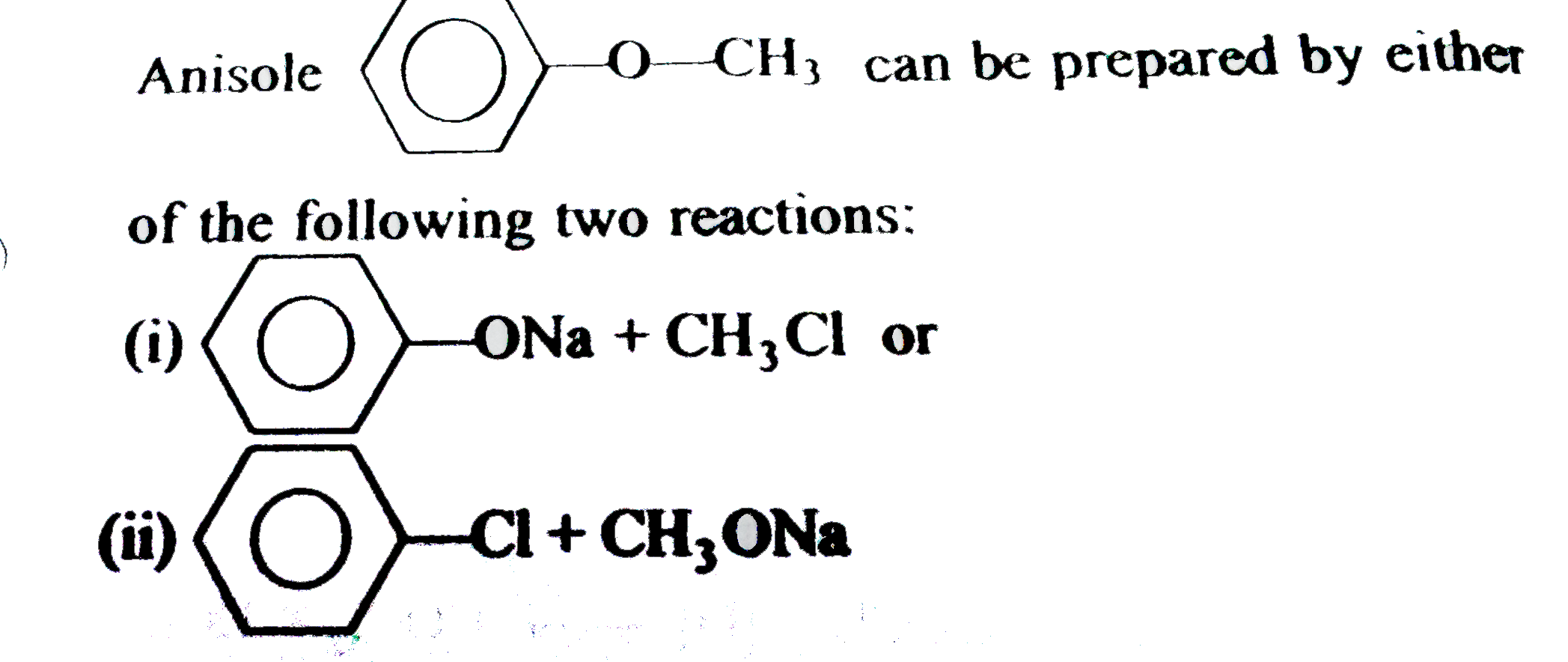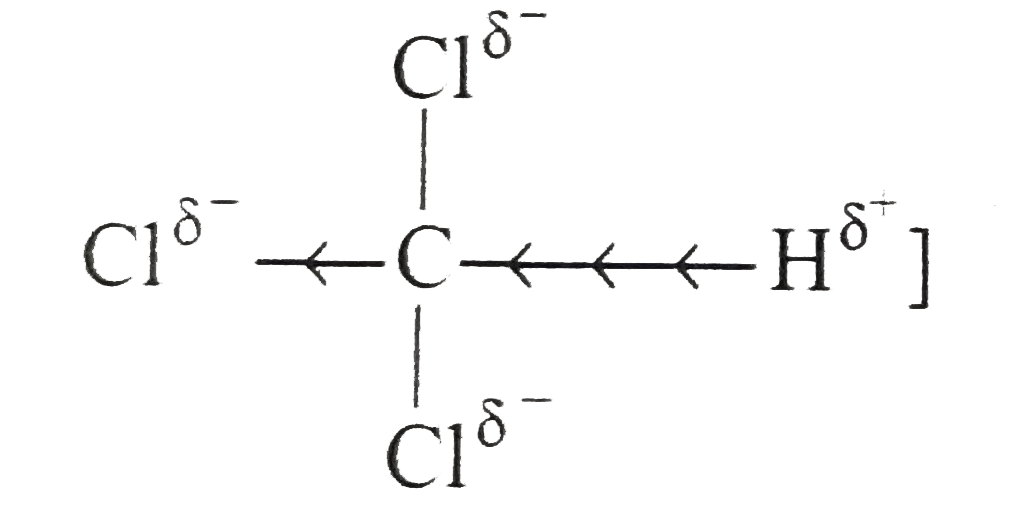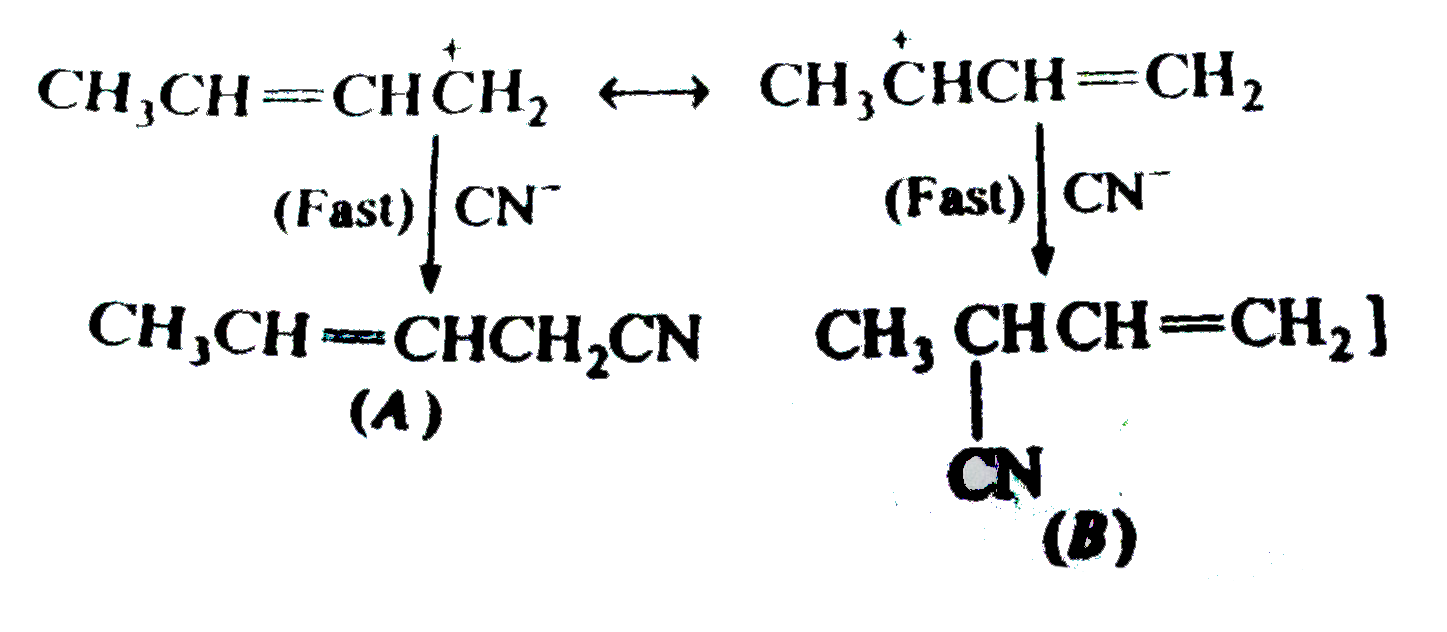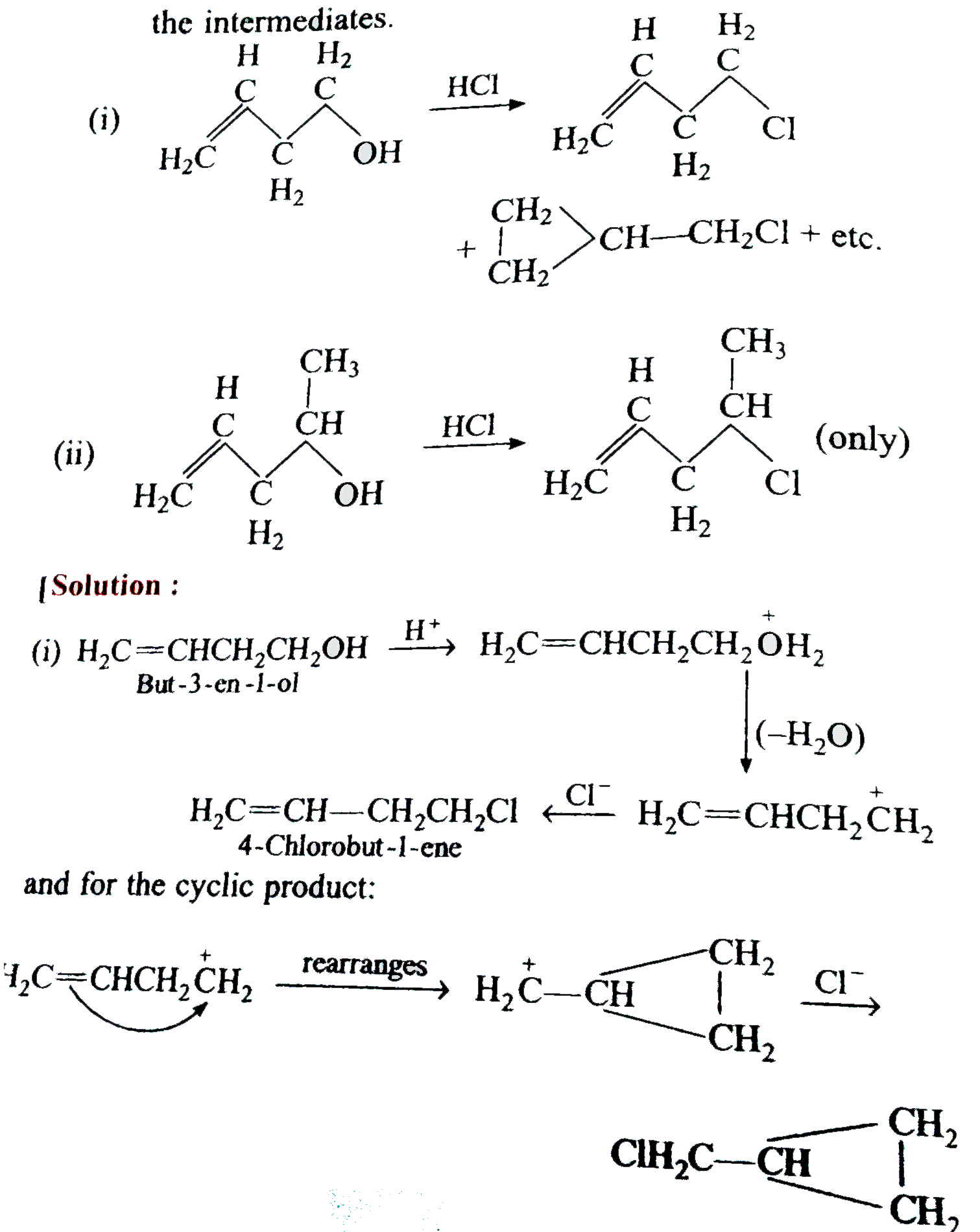Explain the following :
(a) Carbon tetrachloride is used as fire extinguisher.
(b) Use of chloroform as anaesthetic is decreasing.
(C) Chloroform is kept with a little ethyl alcohol in a dark brown coloured bottle.
(d) Iodoform gives precipitate with AgNO3 on heating while chloroform does not.
(E) Alkyl iodides become darken on standing in presence of light.
(f) A small amount of Nal or KI catalyses the hydrolysis of R-CI or the reaction,
R−CI+R'ONa→R−O−R'+NaCI
(g) while preparing alkyl halides from alkanes ,dry gaseous hydrohalgen acids are used instead of their aqueous solutions.
(h) Hydrogen atom of chloroform is definitely acidic in nature.
(i) Vinyl halide is less reactive while allyl halide is more reactive than alkyl halides. or
Vinyl chloride does not gives SN reaction but allyl chloride gives.
(j) Why is free radical halogenation of alkanes is seldom used for laboratory preparation of alkyl halides ? Under what condition good yields of monosubstituted chloride can be obtained ?
(K) What effect should the following resonance of vinyl chloride have on its dipole moment?
H2C−δ+CH−δ−CI⇔H2δ−C−CH=δ+CI
(I) 2-Chloro-3-methylbutane on treatment with alcoholic potash gives2- methylbut-2-ene as the major product.
(m) Compare the rates of (i) SN1and(iii)SN2 reactions of allyl chloride and n-propyl chloride.
(N) When CH3CH=CHCH2CI reacts with alcoholic potassium cyanide, a mixture of isomeric product is obtained.
(O) the formation of the products giving the structures of the intermediates.

(q) Arrange C6H5CH2CH2CI, C6H5CHCICH3 and C6H5CH=CHCI in the order of their decreasing activities with alcoholic silver nitrate.
(r) Arrange CH3CH2Br,C6H5 and C6H5CH2Br in order of their decreasing activities with KCN.
(s) Chlorobenzene is less reactive as compared to ethyl chloride.
Text Solution
(a) the dense vapours form a protectivelayer on the burning objects and prevent the oxygen or air to come in contact with the burning objects.
(b) Due to side effects , as it causes liver damage, etc, it is rarely used as anaesthetic these days.
(c) when exposed to sunlight and air . chloroform slowly decomposes into phosgene and hydrogen chloride. Phosgene is extremely poisonous gas. As to prevent the decomposition it is stored in dark brown coloured bottle and 1% ethyl alcohol is added. This retards the decomposition and converts phosgene into harmless ethyl carbonate.
CHCI3+[O]→COCI2+HCI,
COCI2+2C2H2OH→(C2H5)CO3+2HCI]
(d) C-I bond being less stable than C-CI bond and thus undergoes fission on heating giving I− ions which combine with Ag+ ions to form a yellow ppt.
(e) Alkyl iodides are less stable and lose free iodine . this iodine makes the remaining iodide darken.
(f) NaI or KI reacts with R-CI to form R-I. the alkyl iodide is comparatively more reactive than alkyl chloride it undergoes hydrolysis readily or reacts with R' ONa to form ether.
R−I+HOH→R−OH+HI
R−I+R'ONa→R−O−R'+NaI
(g) Dry hydrohalogen acids are stronger acids and better electrophiles than H3O formed in the aqueous solutions. Furthermore, H2O is a nucleophile and can easily react with R-X to form alcohol.
(h) Chlorine is more electronegative than carbon. Due to three chlorine atoms the carbon acquires partial positive charge on account of -I effect . The carbon atom thus attracts the electron pair of C-H bond towards itself making the hydrogen atom removal as proton easier

(i) in vinyl chloride C-CI bond is stable due to resonance (as in chloro benzene)

Hence CI atom cannot be repleaced .Further sp2 -hybridized carbon is more acidic than sp3−carbon .
In allyl chloride SN reaction is easier allkyl carbonium ion formed after removal of CI− is stabilized by resonance.
H2C=CH−CH2CI→CI−+H2C=CH−∗CH2
↔H2⋆C−CH=CH2
(j) Serveral isomeric monosubstituted halides are formed because alkanes have different types of hydrogen atoms Their separation is difficult. thus free radical halogenation method is not used unless the parent hydrocarbon possesses equivalent hydrogen atoms. Good yields are obtained in hydrocarbons such as
CH3−CH3(CH3)4C, cyclopropane etc,
(k) The dipole moment increase because the distance between positive and negative partial charges increases .
(L) elimination occurs in accordance to Saytzeff's rule i.e., elimination of hydrogen from the carbon which is attached with least number of hydrogen atoms.

(m) (i) Allyl chloride is much more reactive than n-propy. chloride and the + charge of its intermediate R+ is stabilized by resonance
(H2C=CH−∗CH2↔H2∗C=CH−CH2)
(ii) Allyl chloride is again more reactive but not to the extent of SN1 reaction and stabilized the transition state.
(n) It can undergo SN1 and SN2 reactions. By SN2 reaction only one product (A) is formed.
CH3CH=CHCH2CI1-Chlorobut+CN−(Slow)−−−−→SN2CH3CH=CH−CH2⋮CN......CI
(Fast)−−−→CH3CH=C(A)HCH2CN
By SN1 reaction the intermediate is carbocation (resonance stabilized ) and can give a mixture of two isomeric products (A) and (B).
CH3CH=CHCH2CI(Slow)−−−−−→SN1

(O) 
In this reaction the major product (4-chlorobut-1-ene) is formed by SN2 mechanism. Now the second product is formed by the initial formation of carbocation and attacked by the double bond on the +ve carbon atom to form a second (cyclic) carbocation which eventually gives the product.

In this reaction the +I effect of CH3− group avoids cyclisation .
(p) (i) 
because in equation (ii) C-CI bond is stable due to resonance hence nucleophilic attack is not preferred.
(q) C6H5CHCICH3>C6H5CH2CH2CI>C6H5CH=CHCI
(r) C6H5CH2Br>CH3CH2Br>C6H5Br
(s) The low reactivity of chlorobenzene is due to partial double bond character of C-CI bond i.e., it is shorter and stronger bond in comparison to C-CI bond in ethyl chloride.

|
Updated on:21/07/2023
Topper's Solved these Questions
- BOOK - OP TANDONCHAPTER - HALOALKANES AND HALOARENES EXERCISE - Matching type2videos
HALOALKANES AND HALOARENES
- BOOK - OP TANDONCHAPTER - HALOALKANES AND HALOARENES EXERCISE - Problems based on structure and properties18videos
HALOALKANES AND HALOARENES
- BOOK - OP TANDONCHAPTER - HALOALKANES AND HALOARENES EXERCISE - Problem11videos
HALOALKANES AND HALOARENES
- BOOK - OP TANDONCHAPTER - ELECTROCHEMISTRYEXERCISE - Matrix-Matching Type Question3videos
ELECTROCHEMISTRY
- BOOK - OP TANDONCHAPTER - ISOMERISM (STRUCTURAL AND STEROISOMERISM)EXERCISE - INTEGER7videos
ISOMERISM (STRUCTURAL AND STEROISOMERISM)
Similar Questions
Knowledge Check
- Question 1 - Select One
Iodoform gives a precipitate with AgNO3 on heating but chloroform does not because -
AIodoform is ionicBChloroform is covalentCC–I bond in iodoform is weak and C–Cl bond in chloroform is strongDNone - Question 2 - Select One
Iodoform gives yellow ppt. with aq. AgNO3 on heating but chloroform doesnot give any ppt. because
AC-I bond in iodoform is weaker than C-Cl bond of chloroformBIodoform is covalent, chloroform is ionicCIodoform is highly unstable, chloroform is highly stableDNone of the above - Question 3 - Select One
Why is chloroform put into dark coloured bottles
ATo prevent evaporationBTo prevent from moistureCTo prevent in from oxidation to form phosgeneDTo prevent its reaction with glass
The use of chloroform as anaesthetic is decreasing. Why?
View SolutionExplain the following :
Alkyl iodides become darken on standing in presence of light.View SolutionExplain the following :
Alkyl iodides become darken on standing in presence of light.View SolutionThe reason to keep chloroform in dark brown coloured bottles is:
View SolutionThe reason to keep chloroform in the dark brown coloured bottle is:
View Solution

